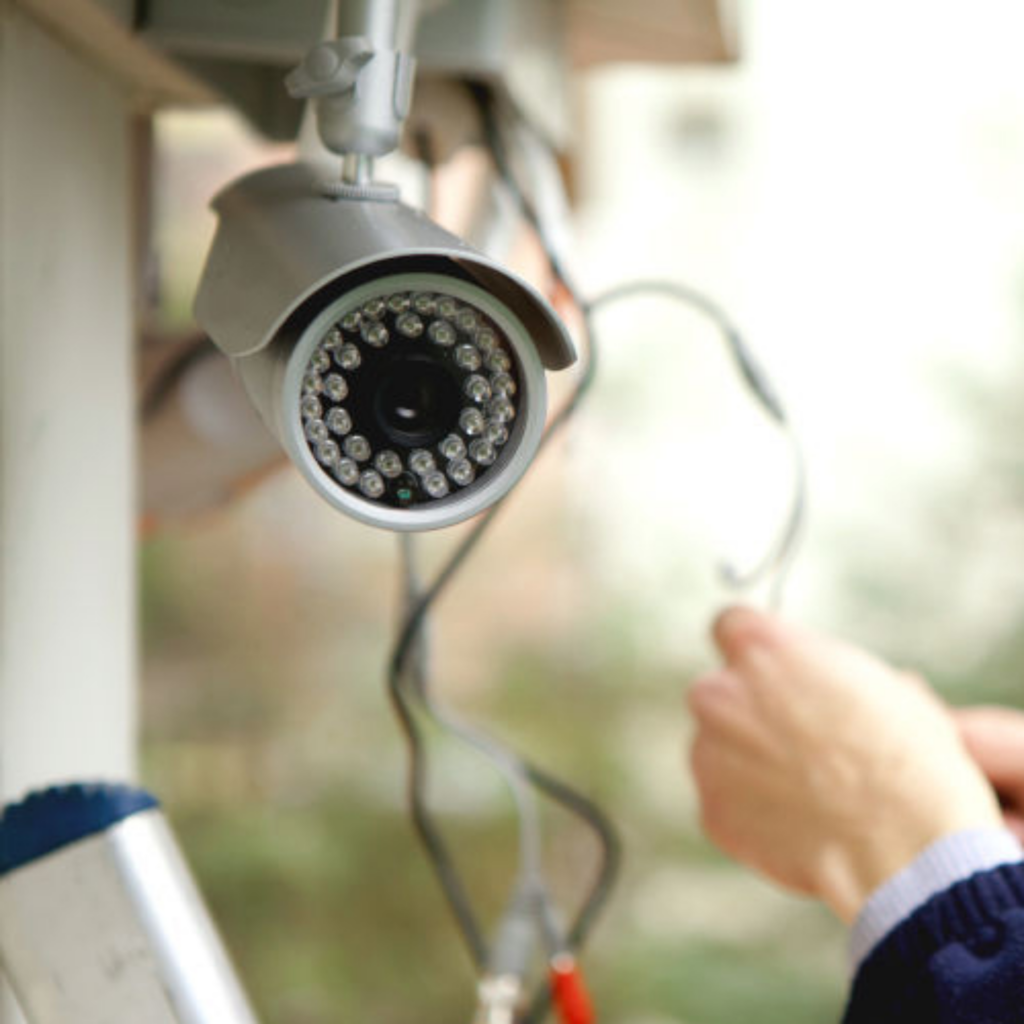CCTV System Setup and Maintenance
In an age where security threats are becoming more complex, ensuring the safety of your business, home, or industrial facility is essential. One of the most effective ways to achieve this is by installing a CCTV system (Closed-Circuit Television). A well-configured CCTV system serves as a deterrent to criminal activity, assists in monitoring operations, and provides valuable evidence in the event of a security breach. However, to get the most out of your surveillance system, proper CCTV system setup and maintenance are crucial. This article will explore the critical aspects of setting up a CCTV system, common mistakes to avoid, the importance of ongoing maintenance, and how to ensure your system runs smoothly for years to come.
The Importance of a Well-Planned CCTV System Setup
Installing a CCTV system isn’t as simple as placing cameras at random locations around your premises. The effectiveness of your system depends on strategic planning and correct installation. Below are the primary reasons why a well-planned setup is crucial:
Maximizing Coverage
The purpose of a CCTV system is to provide comprehensive coverage of the areas you want to monitor. A poor setup can leave vulnerable blind spots, rendering parts of your premises unmonitored. By planning your setup, you ensure that critical areas such as entrances, exits, storage rooms, and parking lots are adequately covered.
Deterrence
CCTV systems act as a powerful deterrent against crime. However, they must be visible and positioned strategically to serve this purpose. A camera installed at a well-lit, easily visible location, such as the main entrance, is more likely to deter potential criminals than one that is hidden or poorly placed.
Optimizing Image Quality
Placement and configuration of cameras directly impact the quality of footage. Cameras should be positioned to avoid glare, blind spots, or backlighting issues that may compromise image quality. High-resolution cameras should be used for areas where identification, such as facial recognition, is important.
Efficiency in Incident Response
An efficient CCTV system provides real-time monitoring, enabling a rapid response to incidents. For this reason, the system needs to be installed and configured in such a way that authorized personnel can quickly access live footage, whether on-site or remotely.
Steps for a Proper CCTV System Setup
To ensure your CCTV system is properly installed and configured, here are the key steps to follow:
Site Survey and Planning
Before installation begins, conduct a thorough site survey to identify key security vulnerabilities. Take into account factors such as the size of the premises, potential entry points for intruders, high-value areas, and environmental conditions (lighting, weather, etc.). This step is critical in determining the type and number of cameras required and their optimal positioning.
Cable Management and Network Configuration
For wired systems, ensure cables are securely routed and hidden to prevent tampering or damage. Additionally, make sure the cameras are properly connected to the DVR (Digital Video Recorder) or NVR (Network Video Recorder), depending on whether you’re using an analog or IP camera system. Wireless systems require a reliable network connection, and careful placement of routers or access points is essential to prevent disruptions.
Configuring the System
After the physical installation, the system must be configured for optimal performance. This includes setting up recording schedules, adjusting the motion detection sensitivity, and configuring remote access capabilities for real-time monitoring. Most modern CCTV systems allow remote monitoring via mobile apps or web browsers, which is invaluable for business owners who need to keep an eye on multiple locations.
Installing and Positioning Cameras
When installing the cameras, ensure they are positioned at the correct height and angle. Ideally, outdoor cameras should be installed at a height where they cannot be easily reached or tampered with but still capture clear footage of entrances and surrounding areas. Indoor cameras should be placed strategically to cover all critical zones without compromising the privacy of employees or visitors in sensitive areas, such as restrooms.
Testing the System
Once the cameras are in place and the system is configured, it’s essential to test everything. This includes checking the video quality in different lighting conditions, testing the motion detection features, and verifying the storage and retrieval of recorded footage.
Selecting the Right Cameras
Not all cameras are created equal, and choosing the right ones is crucial to the success of your surveillance system. Common types of cameras include:
- Dome Cameras: Ideal for indoor use and wide coverage, as they provide 360-degree views.
- Bullet Cameras: Best for long-range monitoring and outdoor use.
- PTZ Cameras (Pan-Tilt-Zoom): These cameras can be remotely controlled to pan, tilt, and zoom, making them ideal for large spaces such as parking lots.
- Thermal Cameras: Designed for detecting heat signatures, these cameras are useful in low-light conditions or areas where visibility is compromised.
Your choice of camera will depend on the specific needs of the environment you’re monitoring.
The Importance of CCTV System Maintenance
Even the best CCTV systems can become less effective over time if they are not properly maintained. Regular maintenance ensures that your cameras continue to function optimally and that your system remains reliable when you need it most.
Regular System Health Checks
Routine health checks involve inspecting the cameras, cables, DVR/NVR, and other system components to ensure they are working correctly. Over time, dirt or debris may accumulate on the cameras, leading to blurry images. Checking and cleaning the lenses periodically is crucial for maintaining image clarity.
Firmware and Software Updates
Just like any other piece of technology, CCTV systems require regular software and firmware updates to improve functionality and address security vulnerabilities. Outdated software may leave your system susceptible to hacking, especially if you have remote access enabled. It’s important to stay up-to-date with the latest security patches and feature enhancements provided by the manufacturer.
Storage Management
CCTV systems generate a large amount of data, particularly if you’re using high-definition cameras. Over time, the hard drives used for video storage may fill up, and important footage could be overwritten. Regularly check the storage capacity of your system and implement a data retention policy to determine how long footage should be kept before being deleted. Cloud-based storage solutions can help mitigate storage limitations by providing scalable storage options.
Testing Motion Detection and Alerts
The motion detection feature is one of the most useful tools for ensuring your CCTV system only records when necessary, saving storage space and allowing quicker identification of security breaches. However, the motion sensitivity settings need to be properly calibrated to avoid false alarms. Regularly test these settings and adjust them as necessary, especially if environmental conditions such as lighting have changed.
Inspecting Power Supplies and Connections
A common issue with CCTV systems is power failure. Ensure that the cameras are consistently receiving power, whether through direct wiring or batteries, and check all connections for wear and tear. For systems with backup batteries or generators, it’s important to test these regularly to ensure they will function in the event of a power outage.
Checking for Vandalism or Tampering
Cameras installed in public areas or in locations prone to vandalism should be inspected for signs of tampering. Protective housings or anti-vandal cameras can be used to minimize the risk of damage, but regular checks are still necessary to ensure the cameras remain in optimal condition.
Benefits of Regular CCTV System Maintenance
Consistent Performance
Regular maintenance ensures that your cameras continue to capture clear footage and that the system operates without interruptions.
Extended Equipment Lifespan
By keeping the system well-maintained, you reduce wear and tear, extending the life of the equipment and saving on costly replacements.
Enhanced Security
Well-maintained cameras are less likely to fail when you need them most, ensuring continuous protection.
Compliance
Many industries require businesses to maintain functional CCTV systems for security and compliance reasons. Regular maintenance ensures you meet regulatory requirements and avoid fines.
Have a project in mind?
Do not hesitate to say
Why Choose Us
Choosing our company for your IP CCTV installation ensures you receive top-notch service and cutting-edge technology. Our commitment to excellence and customer satisfaction sets us apart in the industry.

Expertise and Experience
Our team comprises seasoned professionals with extensive experience in IP CCTV installations. We stay abreast of the latest industry trends and technologies to provide the best solutions for our clients.
Customized Solutions
We understand that each client has unique security needs. Our tailored solutions ensure that your IP CCTV system is perfectly aligned with your specific requirements and budget.
Reliable Support
We pride ourselves on providing exceptional customer support. From initial consultation to ongoing maintenance, we are dedicated to ensuring your complete satisfaction.
Conclusion
A properly installed and maintained CCTV system is one of the most effective tools for ensuring security at your business or home. A well-thought-out setup maximizes coverage, minimizes blind spots, and ensures high-quality footage in critical areas. However, setting up the system is only the first step. Ongoing maintenance is just as important for ensuring that the system remains fully operational and reliable. By investing in professional setup and committing to regular maintenance, you’ll not only protect your property but also create a safer environment for employees, customers, or residents. Whether it’s for monitoring operations, deterring crime, or ensuring compliance, a well-maintained CCTV system is an indispensable asset.

